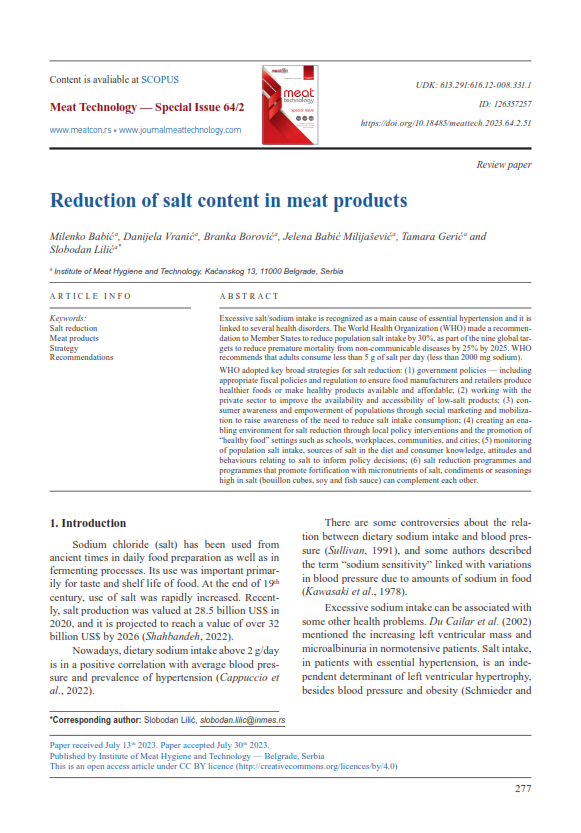Reduction of salt content in meat products
Abstract
Excessive salt/sodium intake is recognized as a main cause of essential hypertension and it is linked to several health disorders. The World Health Organization (WHO) made a recommendation to Member States to reduce population salt intake by 30%, as part of the nine global targets to reduce premature mortality from non-communicable diseases by 25% by 2025. WHO recommends that adults consume less than 5 g of salt per day (less than 2000 mg sodium).
WHO adopted key broad strategies for salt reduction: (1) government policies - including appropriate fiscal policies and regulation to ensure food manufacturers and retailers produce healthier foods or make healthy products available and affordable; (2) working with the private sector to improve the availability and accessibility of low-salt products; (3) consumer awareness and empowerment of populations through social marketing and mobilization to raise awareness of the need to reduce salt intake consumption; (4) creating an enabling environment for salt reduction through local policy interventions and the promotion of “healthy food” settings such as schools, workplaces, communities, and cities; (5) monitoring of population salt intake, sources of salt in the diet and consumer knowledge, attitudes and behaviours relating to salt to inform policy decisions; (6) salt reduction programmes and programmes that promote fortification with micronutrients of salt, condiments or seasonings high in salt (bouillon cubes, soy and fish sauce) can complement each other.





